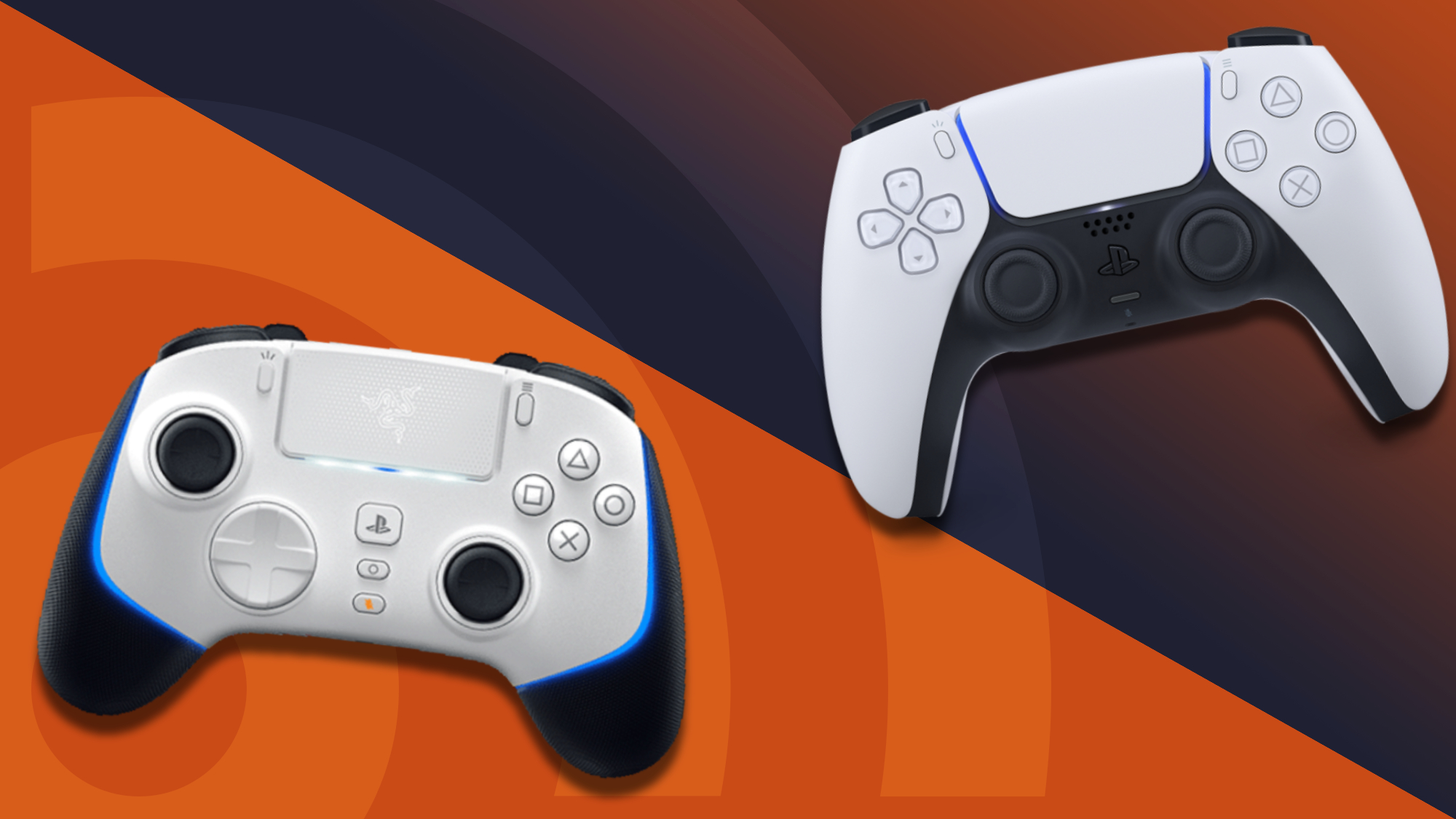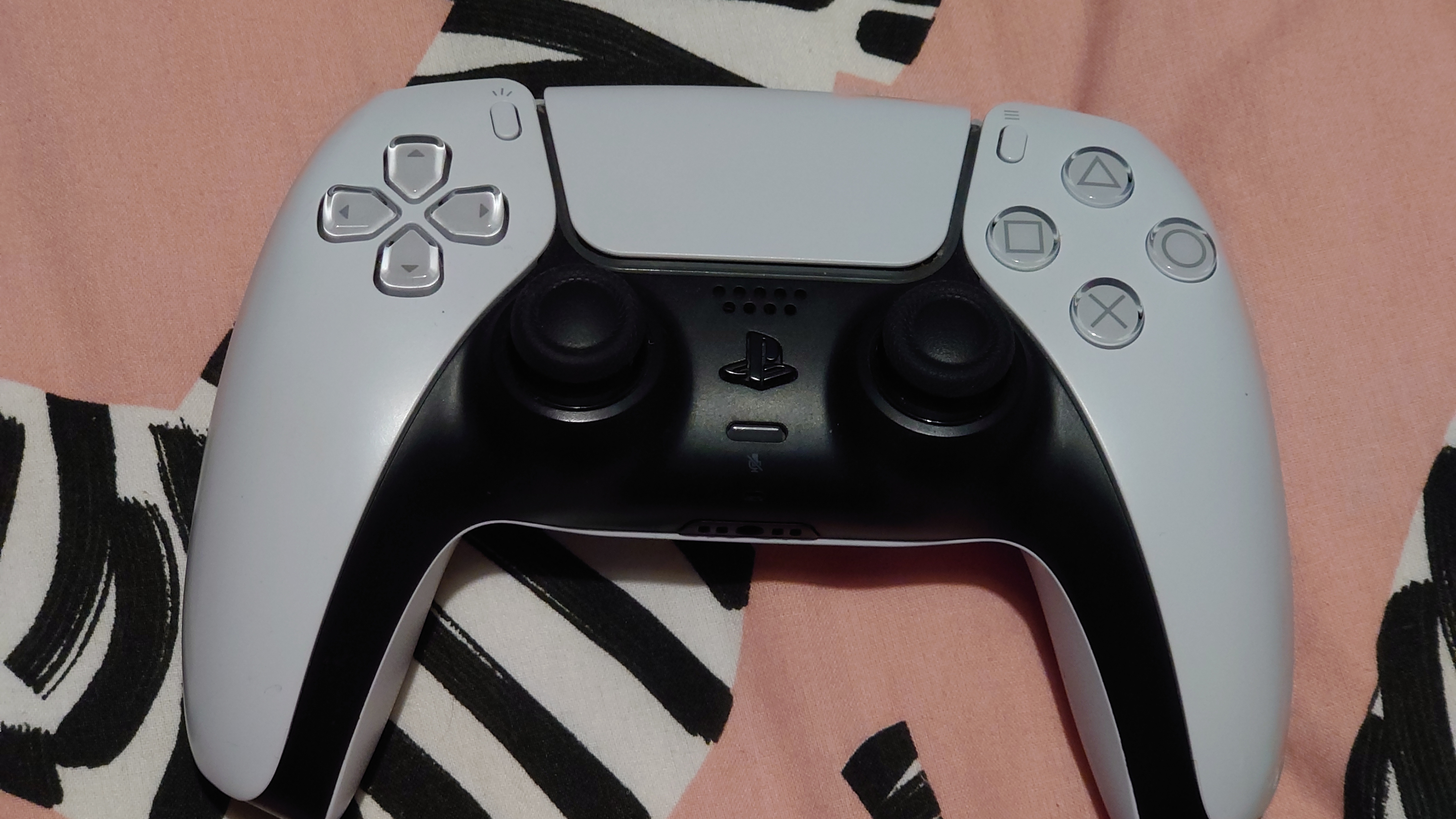DualSense vs Razer Wolverine V2 Pro: which PS5 controller is right for you?
The two controllers compared

If you’re searching for an additional PS5 controller, you could stick to the official DualSense wireless controller or branch out to see what the third-party manufacturers offer. These brands often design their controllers to more specialist uses, such as the Razer Wolverine V2 Pro which is primarily made for competitive play. With their differences in mind, we're discussing the DualSense vs Razer Wolverine V2 Pro to help you figure out which is the best fit.
Compared to the best Xbox controllers, there are fewer officially supported options on PS5 which makes the Razer Wolverine V2 Pro stand out. An officially licensed pad that strips back a lot the features of the DualSense, making a leaner, more focused gamepad. We’ve analyzed the features, design, and price to help you make an informed purchasing decision.
The DualSense is a revolutionary upgrade over the established formula Sony has stuck to for over 20 years. With a refined ergonomic shape and features such as adaptive triggers and haptic feedback, there’s a lot to love for the asking price. However, the added bells and whistles come at the cost of the battery life, which isn’t up to par with other console manufacturers' efforts.
Pros
- Amazing adaptive triggers
- Excellent ergonomic design
- Great build quality
Cons
- Poor battery life
- Built-in mic isn’t great
The Razer Wolverine V2 Pro is the company’s first foray into PS5 controllers after finding success with the Raiju line on the PS4. Armed with microswitch buttons, D-pad, shoulders, and low latency, this eSports-centric gamepad is made to satisfy enthusiasts, but the high asking price and unsatisfying build quality let it down as a generalist pad.
Pros
- Microswitches
- Reprogrammable paddles
- Great battery life
Cons
- Lacks premium feel and design
- Average feeling triggers
- Woefully overpriced

DualSense vs Razer Wolverine V2 Pro: price and release date
Sony released the DualSense alongside the PS5 on November 12, 2020, in the US and Australia, with the UK getting the system and controller a week later. At launch, the DualSense was only available in the standard white color scheme, but new variants appeared since. It’s now possible to get your hands on the gamepad in Midnight Black, Cosmic Red, Nova Pink, Starlight Blue, Galactic Purple, or Grey Camouflage. You can even get one themed around God of War Ragnarok, too. A DualSense controller sells for $59.99 / £59.99 / AU$ 119.95, though some are colors more expensive in different regions.
In contrast, the Razer Wolverine V2 Pro is considerably more expensive than the DualSense, retailing at $249.99 / £249.99 / AU$ 475.95. It’s available directly from Razer right now in the US, but those in the UK and Australia will need to wait until January 19 for the shipments to go out. Big box retailers worldwide should start stocking the gamepad shortly afterward. Currently, you can opt for either the white or black versions, with the latter slated for the end of the month.

DualSense vs Razer Wolverine V2 Pro: design and features
Multiple factors separate Razer’s Wolverine V2 Pro controller from the DualSense. At first glance, both gamepads feature all the same essential components: the touchpad is where you’d expect to find it, along with the four face buttons, twin sticks, bumpers, and triggers. Where Razer deviates is the Wolverine V2 Pro ‘s asymmetric stick placement
The differences don’t stop there; flip the Razer Wolverine V2 Pro over and you’ll notice the addition of six total remappable buttons – two shoulders and four paddles. Through the Razer Controller app on your Android smartphone or iPhone, you can assign a profile tailored to your playstyle of shooters, racing games, action titles, etc.
A significant deviation from Sony’s DualSense is that the Wolverine V2 Pro lacks adaptive triggers and HD rumble. While vibration isn’t essential, the triggers are. You’re losing adaptive resistance in favor of standardized hairline stops – making this pro controller more like the Razer Wolverine Ultimate. The ability to switch between the click and the full range of travel is certainly commendable, but it’s not very high-tech, and the smaller surface area could leave a lot to be desired if you have larger hands.
Sign up for breaking news, reviews, opinion, top tech deals, and more.

Battery life is one of the most important features of any wireless controller, and going directly head-to-head, the Razer Wolverine V2 Pro easily sweeps the DualSense. When we tested it, the Wolverine V2 Pro could last 9-10 hours thanks to the implementation of the 2.4 GHz wireless HyperSpeed dongle instead of Bluetooth. Razer says that by disabling the gamepads Chroma RGB lighting you can significantly extend that playtime to 28 hours, which we can confirm from our testing.
The DualSense battery life just isn’t great. We’ve long since wished we could use AA batteries in the PS5 controller to boost the play time as with the Xbox Wireless Controller, but it’s just not an option. The official lifespan of the remote is between five to eight hours depending on usage, but depending on the game, we’ve seen the pad last a little longer. Though, we’ve found that our DualSense controllers seemed to lose their maximum total charge over time.
We had high hopes that Sony’s DualSense Edge, a $199.99 / £209.99 / AU $339.95 pro controller, would have a better battery life. However, in our full review, we noted worse battery life overall and - aside from its additional Function buttons - offered little to make it worth considering over a standard DualSense controller.

Should I buy the DualSense or the Razer Wolverine V2 Pro?
Given the Razer Wolverine V2 Pro’s high price and niche feature set, the DualSense is a better choice for most gamers. However, if you could benefit from the lightning-fast microswitches in the D-pad, shoulders, and face buttons, you should seriously consider the Wolverine V2 Pro.
Those pro gamer features will cost you roughly five times the price of a DualSense controller, however. The controller costs more than both the DualSense Edge and the custom-designed Scuf Reflex Pro, the former by $50 / £50 / AU$ 136 and the latter by $30 / £30. That makes the Wolverine V2 Pro a difficult pad to recommend to anyone who doesn’t take console gaming seriously, it’s the priciest Razer gamepad ever made by a considerable margin.
If you’re wanting to up your K/D ratio in the likes of Overwatch 2 or Call of Duty: Modern Warfare 2, or want to be ready when Street Fighter 6 releases, the Razer Wolverine V2 is a valid, if expensive option.

Rhys is TRG's Hardware Editor, and has been part of the TechRadar team for over four years. Particularly passionate about high-quality third-party controllers and headsets, Rhys strives to provide easy-to-read, informative coverage on gaming hardware of all kinds. As for the games themselves, Rhys is especially keen on fighting and racing games, as well as soulslikes and RPGs.
- Aleksha McLoughlinContributor
- Dashiell WoodGaming Editor